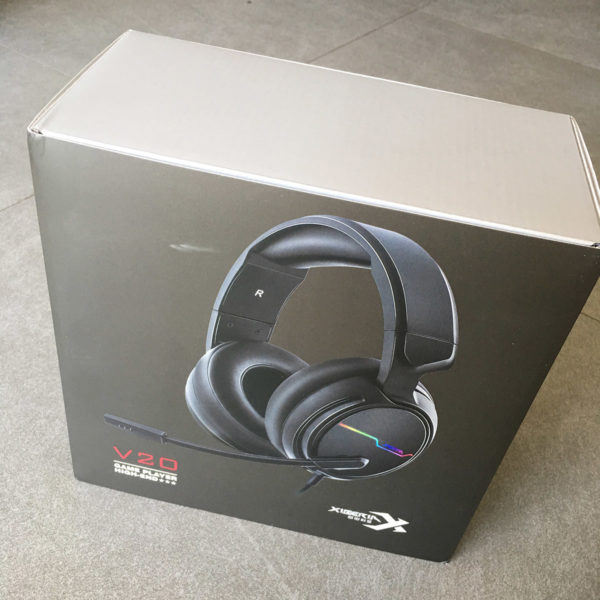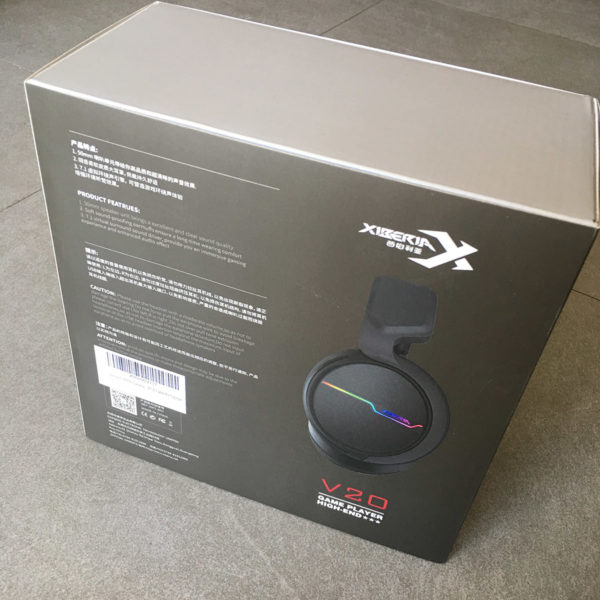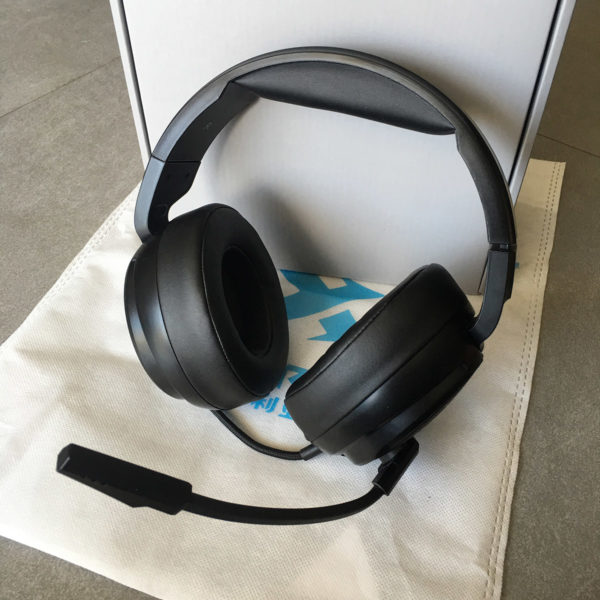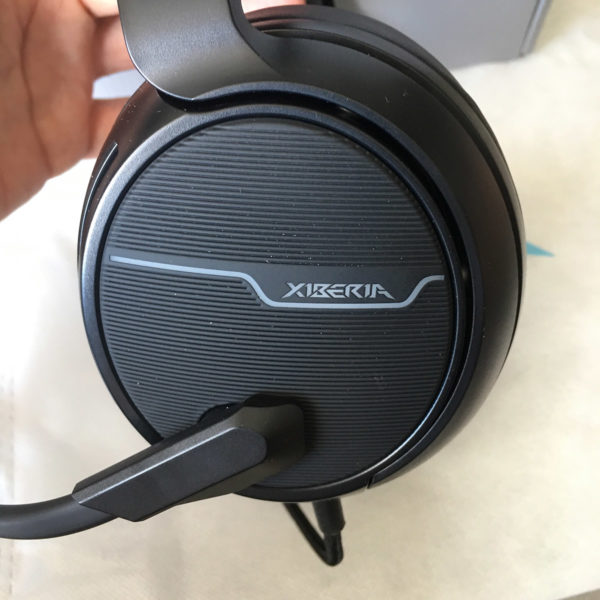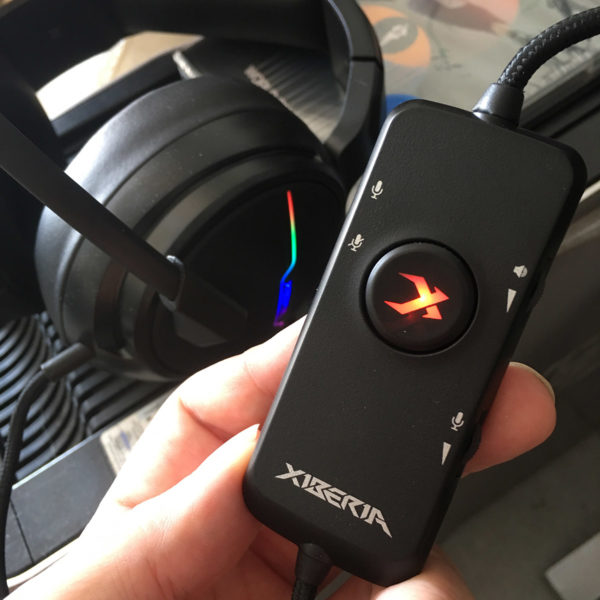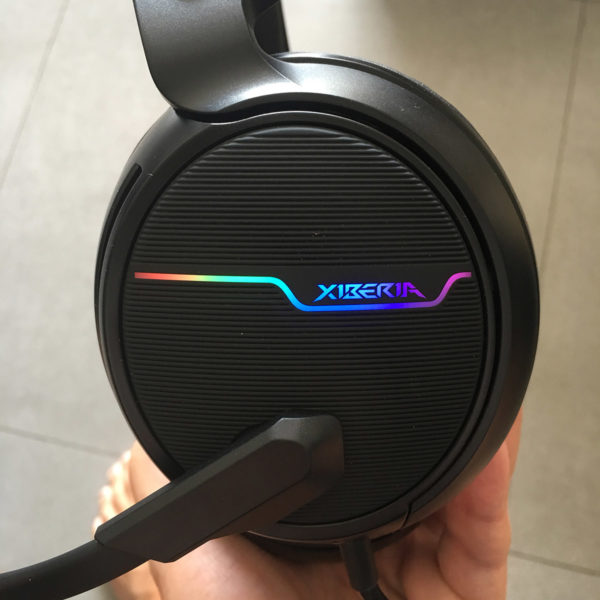
I’ve recently picked up a new Xiberia headset from Jeecoo for $30 on Amazon. It’s a rather large pair of noise cancelling USB stereo headphones with a built-in microphone. I wanted to use these for streaming without disturbing my wife when she’s hard at work on the desk next to me, while avoiding any echoing that would be induced when using a desktop speaker. I’ve been using for the last week and wanted to share my thoughts on it with you here.
The exact model number is the V20, the exact same model that’s available from Walmart for nearly $120. That’s quite steep, and I’m not sure if it’s worth that much. For $30 however, this is quite a bargain.
The device is an over-ear model with a stick-out mic that’s movable, so you can position it exactly in front of or slightly away from your mouth to avoid treating sounds. Alternatively, should you not need it, you can twist it up so that the mic is above your head and out of the way.
It’s advertised as “noise-cancelling”, by which the company means the microphone more than the headphones. Although the headphones isolate what you hear from outside noises, it’s a passive model that shields your ears with two large pairs of round foam cushions. Active models are way more expensive, using a microphone that inverts the outside noises and adds them to what you hear (like the Bose QC series). The Xiberia V20 is not one of those.
The microphone on the other had does an excellent job of excluding typing and ambient room noises from your voice. The levels are a little on the low side and could be higher, but this can be compensated by a gain filter in OBS, if that’s what you’re using.
The applications you can use this device with are manifold. The headset connects with a single USB socket, through which your computer will find two new devices: a Xberia Headset (as output) and a Xiberia Mic (as input). Under Windows 10 and macOS this works without the need to install any drivers, so the Xiberia is detected as a regular sound device in both directions. You can switch to the headphones from appropriate task bar icons, while the Mic can be switched as input source in the application you’re using. I’ve tested this thing with OBS and Skype on both Windows and macOS, and it worked great. An optional software suggests 7.1 audio features, but I’ve not tried this out.
There’s a small box attached to the cable for some additional handy features: one is a big red glowing button, that when pressed will illuminate the stylish rainbow colours on the outsides of the headset. It looks very swanky in the dark and is a nice feature. It’s beautiful what can be done with LEDs these days. The box also has separate analogue control wheels for adjusting the headset volume as well as the mic volume. If found the latter to be a little on the low side, even with the levels cranked up to max, but that’s easily fixed with a gain filter in OBS (I recommend an additional 12dB). There’s also a switch to mute the mic completely, so you can quickly switch it off if you need to. A clip at the back lets you attach the box and both ends of the cable to your clothing to avoid accidents.
Speaking of the cable: it’s made of fabric on the outside and feels like an old school telephone Bantam cable that the operators used to have. It makes a nice difference to the usual plastic feel cables usually have. We don’t often touch cables behind our desk so those matter less, but one that’s close to our bodies at all times does deserve a bit of attention, and I feel that Xiberia have delivered this here.
Sound quality is always difficult to write about, and it’s a very personal opinion. I’d say the headphones sound decent, with great mid tones, a good bass and treble. I felt the full spectrum was nicely reproduced. They’re perhaps not a match for $200 Sennheiser or Bose headphones, but in my opinion they’re a good second. They’re on par with the wireless Apple AirPods, that’s how I can describe them best. In a nutshell, very good. Since they’re large over-ear headphones, they’re probably best for grown ups rather than kids. I look like an airline pilot, and I have a large head. In so doing, I feel they fit comfortably for an hour or two without hurting my ears, and there’s an adjustable clamp on both sides to make the headphones fir higher or lower.
For the microphone, I wish the output levels were a little higher. Having said that, the sound quality you can capture is good enough for most situations. Again, a dedicated desktop mic like the Blue Yeti is far superior, but it’s an expense that’s often overkill if you’re getting started. Besides, it’s not very portable. Compared to those microphones that are integrated in web cams or computers however, this device has the upper hand: you’ve got it right in front of your mouth, so your voice will sound more present with less room noise, which is an immediate improvement.
Who is the target audience for these headphones? I see the Xiberia V20 as something for casual gamers and those who need a quick all-in-one portable solution for those situations where you have a Skype call or game stream in the coffee shop. Noises are suppressed nicely, both for listening and speaking. It adds that little bit of extra privacy when you need it, either in a crowded space or a noisy home (eat that, loud neighbours).
Verdict
If you’ve not tried all-in-one headsets before, I recommend you give this one a go. It has everything to get you started for VOIP calls, screencasts and game streams. With its integrated options there’s no need for a Stream Deck or special software, and the setup is super quick and easy. Sound quality is decent, both for the mic and the headphones, and for $30, I must say this is a bargain.

